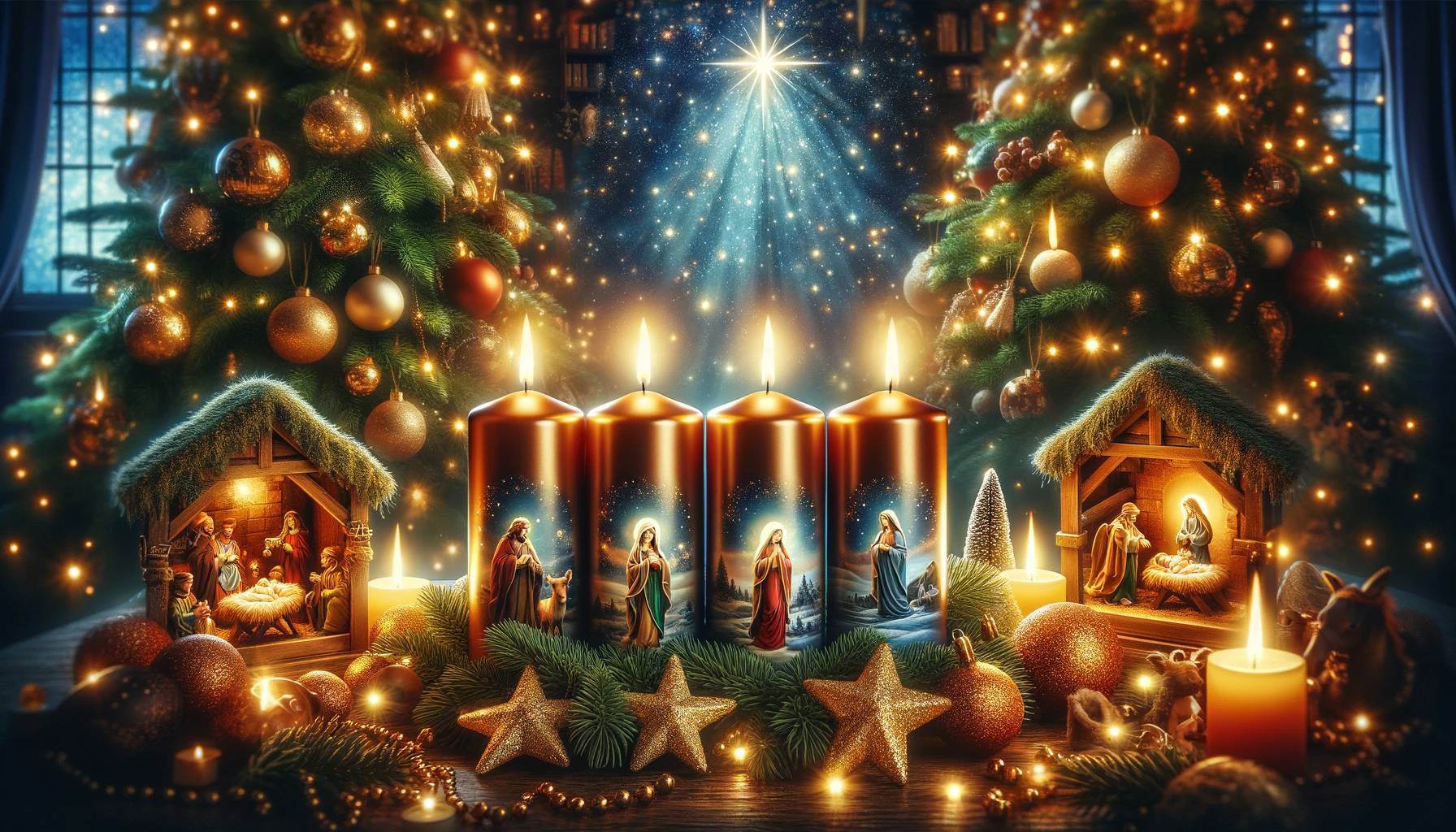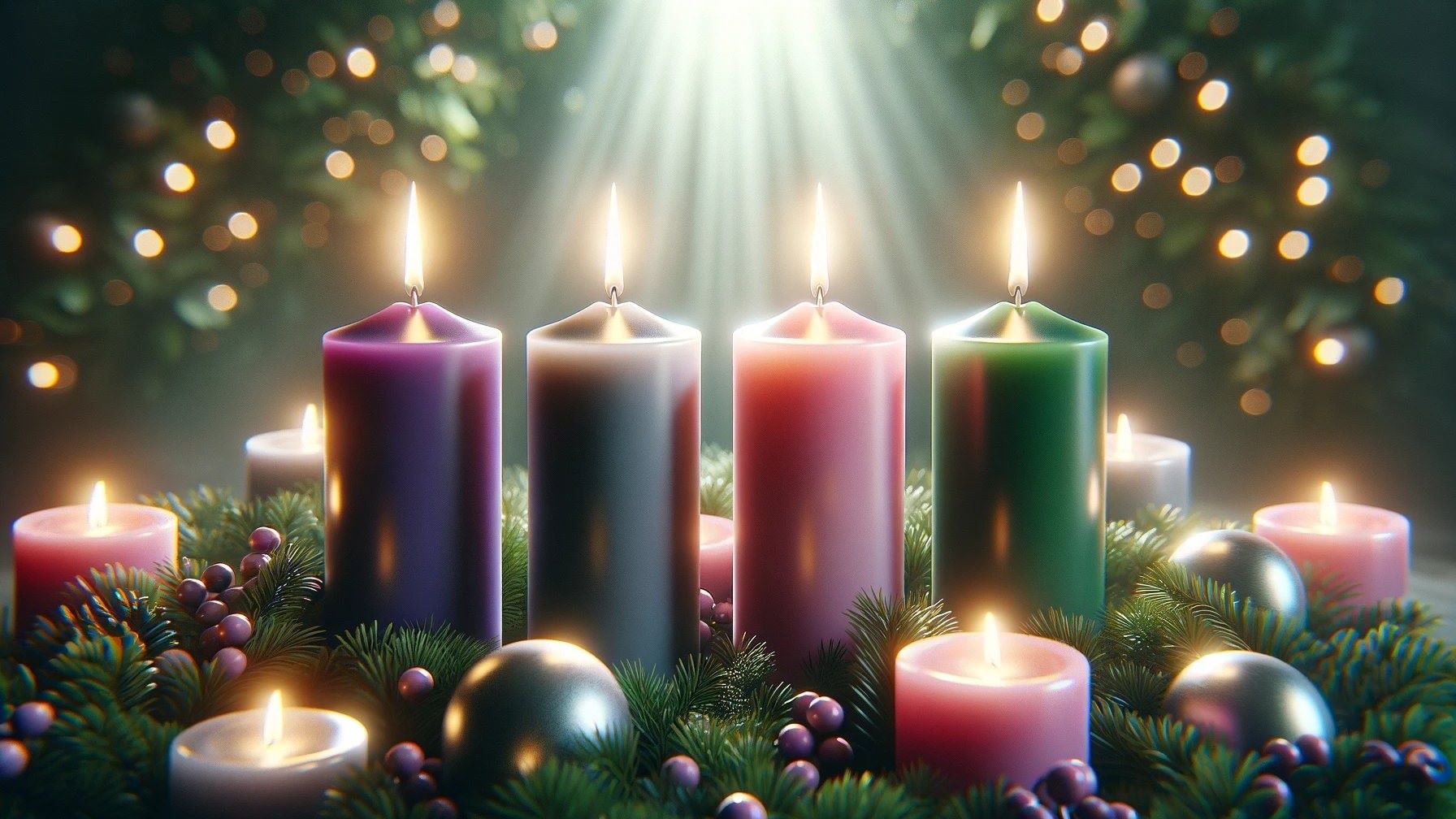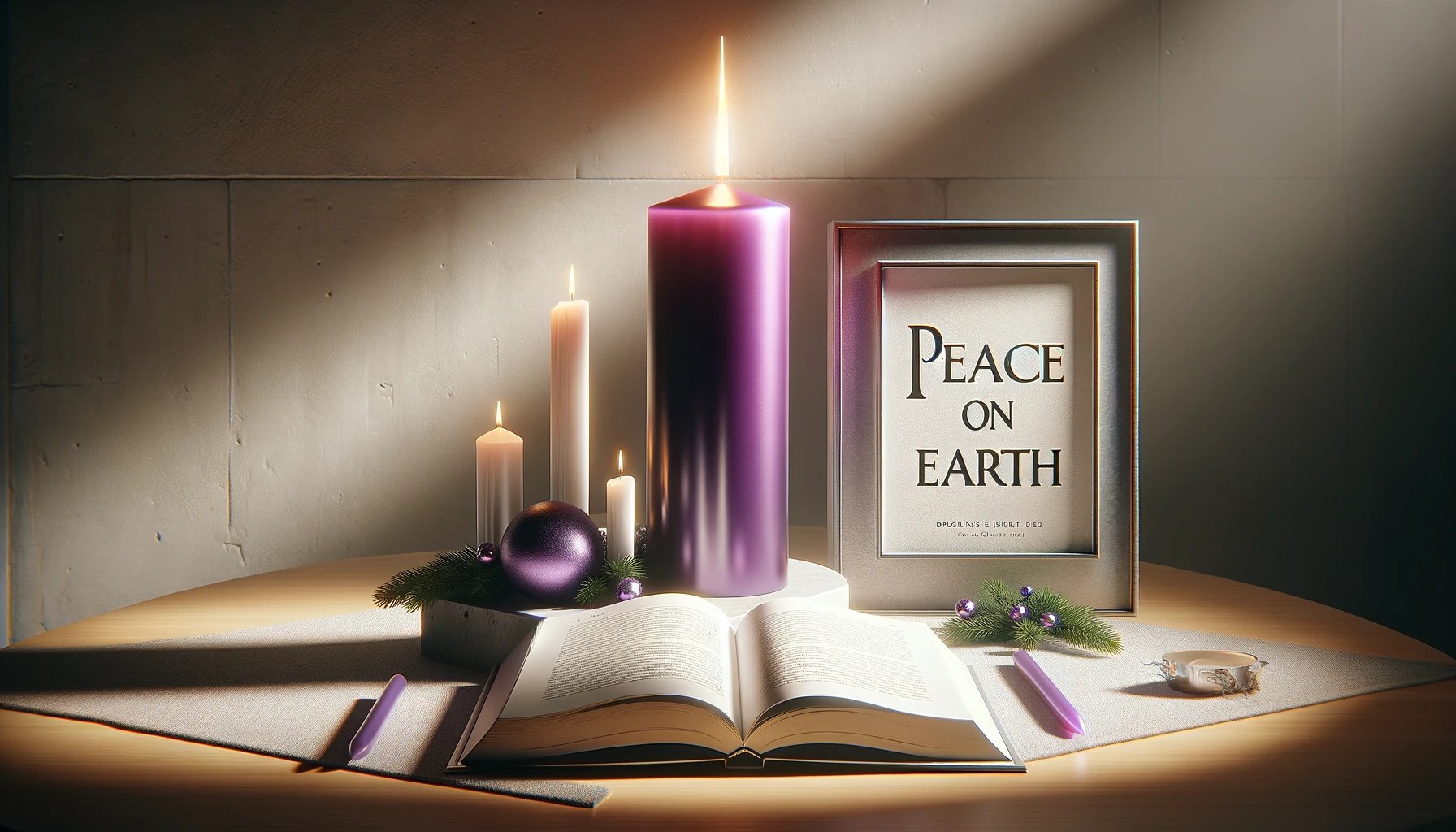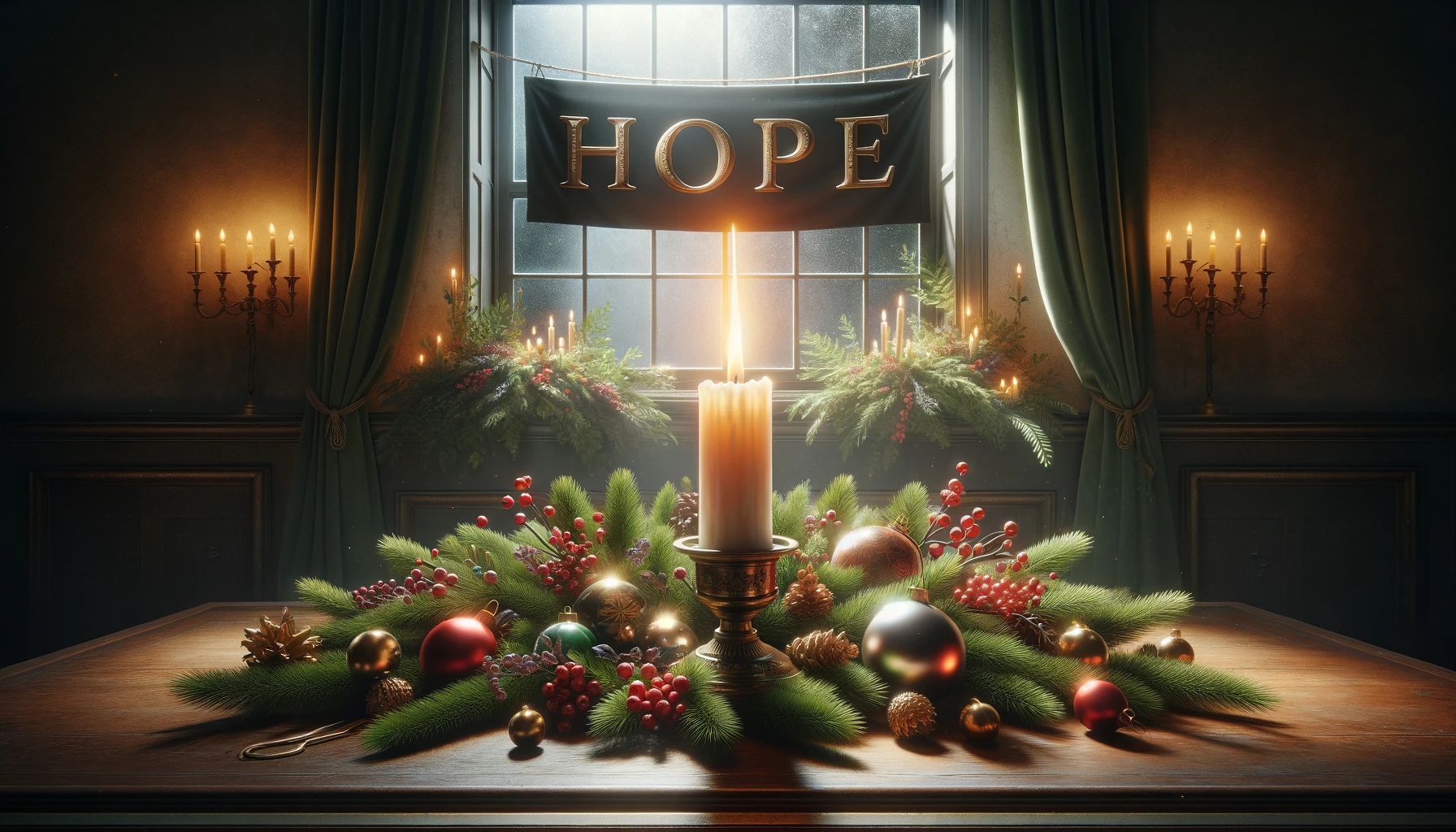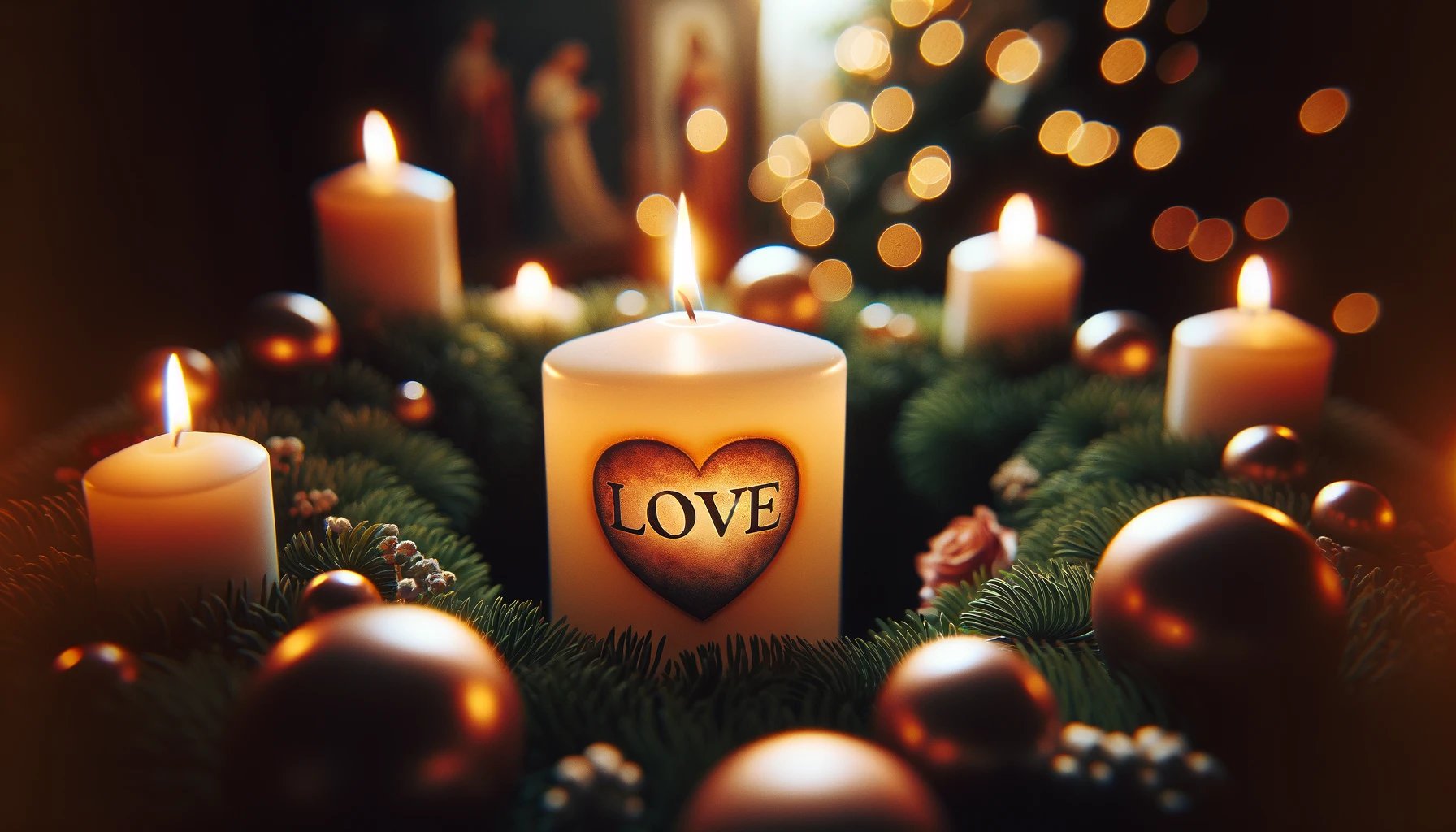Home>Special Themes>What Is The Advent Candle
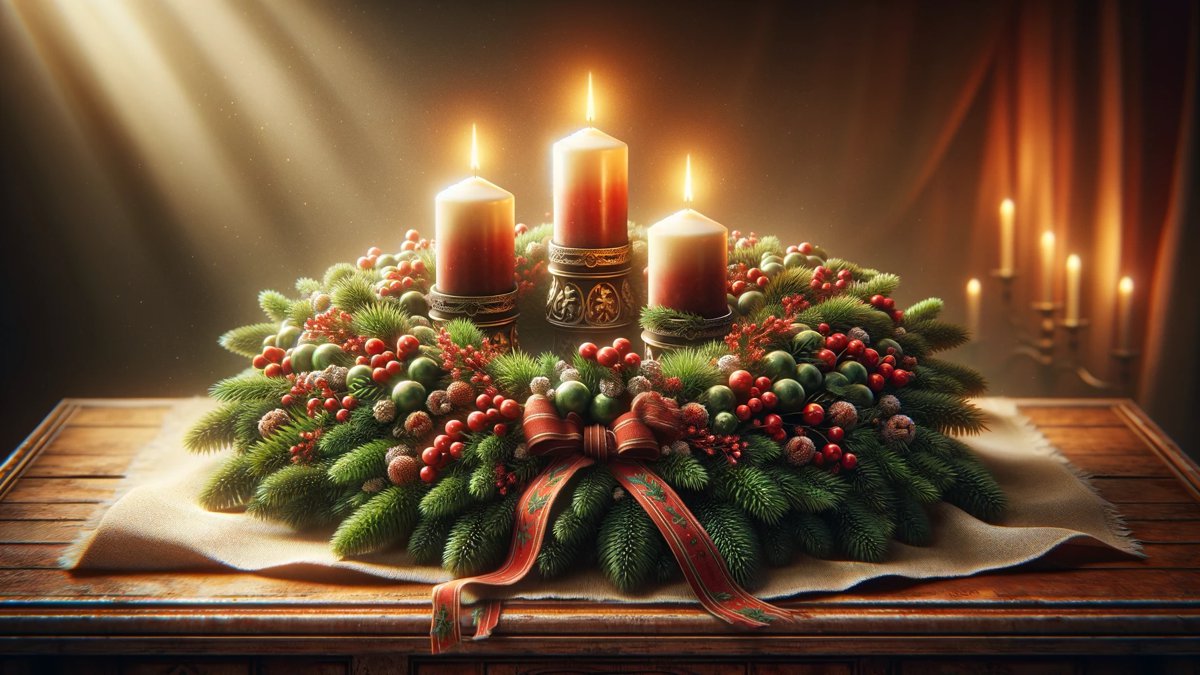

Special Themes
What Is The Advent Candle
Published: February 14, 2024
Jason DeRose, Managing Editor at Christian.net, uses his expertise in religion and journalism to deepen understanding of faith's societal impacts. His editorial leadership, coupled with a strong academic background, enriches the platform’s diverse content, earning him recognition in both journalism and religious circles.
Discover the significance and traditions of the Advent candle in this special-themed exploration. Learn about its history and modern-day practices.
(Many of the links in this article redirect to a specific reviewed product. Your purchase of these products through affiliate links helps to generate commission for Christian.net, at no extra cost. Learn more)
Table of Contents
Introduction
The Advent season is a time of anticipation and preparation for the celebration of the birth of Jesus Christ. It is a period of spiritual reflection and joyful expectation, observed by many Christian denominations around the world. One of the most cherished traditions during this time is the lighting of the Advent candle.
The Advent candle holds a significant place in the hearts of believers, symbolizing the light of Christ shining in the darkness of the world. As the first candle is lit on the first Sunday of Advent, it marks the beginning of this sacred season. Each subsequent Sunday, an additional candle is lit, building anticipation for the arrival of Christmas.
The lighting of the Advent candle serves as a poignant reminder of the hope, peace, joy, and love that Christ brings into the world. It is a time-honored tradition that unites families and congregations, fostering a sense of togetherness and spiritual renewal.
As we delve into the history, symbolism, and practices associated with the Advent candle, we will gain a deeper understanding of its profound significance and the enduring impact it has on the hearts and minds of those who partake in this beautiful tradition.
Read more: What Is An Advent Candle?
History of the Advent Candle
The history of the Advent candle dates back to the early 19th century in Germany, where the tradition of lighting candles to mark the Sundays leading up to Christmas began. It was a way for Christians to symbolize the increasing anticipation and preparation for the birth of Jesus Christ. The custom gradually spread to other parts of Europe and eventually to different Christian denominations worldwide.
Initially, a large wooden wheel with 24 small candles was used to count the days of December leading up to Christmas. Each candle represented a day, and families would light one candle each day as they approached the celebration of Christ's birth. Over time, this practice evolved into the use of a wreath with four or five candles, with each candle representing a different aspect of the Advent season.
The symbolism of the Advent candle is deeply rooted in the Christian faith. The first candle, often called the "Prophet's Candle" or the "Hope Candle," represents the anticipation of the coming Messiah as foretold by the prophets in the Old Testament. The second candle, known as the "Bethlehem Candle" or the "Preparation Candle," signifies the preparation and readiness for the arrival of Christ. The third candle, referred to as the "Shepherd's Candle" or the "Joy Candle," represents the joy and jubilation surrounding the announcement of Christ's birth. The fourth candle, often called the "Angel's Candle" or the "Love Candle," symbolizes the message of love brought by the angels to the world through the birth of Jesus.
In some traditions, a fifth candle, the "Christ Candle," is placed in the center of the wreath and is lit on Christmas Eve or Christmas Day. This candle represents the light of Christ coming into the world and serves as a focal point for the culmination of the Advent season.
The history of the Advent candle is a testament to the enduring significance of this tradition in the hearts of believers. It serves as a visual and symbolic reminder of the spiritual journey towards the celebration of Christ's birth, fostering a sense of unity and reverence among families and congregations.
The evolution of the Advent candle from a simple wooden wheel to the beautifully adorned wreaths we see today reflects the enduring legacy of this cherished tradition. As we continue to honor and uphold the symbolism of the Advent candle, we are reminded of the timeless message of hope, preparation, joy, and love that Christ brings into the world.
Symbolism of the Advent Candle
The symbolism of the Advent candle holds profound significance, encapsulating the essence of the Advent season and the spiritual journey towards the celebration of Christ's birth. Each aspect of the Advent candle carries a rich symbolism that resonates deeply with the hearts of believers, serving as a poignant reminder of the timeless message of hope, preparation, joy, and love.
The first candle, often referred to as the "Prophet's Candle" or the "Hope Candle," symbolizes the anticipation of the coming Messiah as foretold by the prophets in the Old Testament. It represents the hope and expectation that characterized the period before the birth of Jesus, echoing the longing for the fulfillment of God's promise to send a savior to the world.
The second candle, known as the "Bethlehem Candle" or the "Preparation Candle," signifies the preparation and readiness for the arrival of Christ. It embodies the sense of anticipation and the spiritual preparedness that is integral to the Advent season, urging believers to reflect on their own spiritual journey and make room in their hearts for the coming of Christ.
The third candle, often referred to as the "Shepherd's Candle" or the "Joy Candle," represents the joy and jubilation surrounding the announcement of Christ's birth. It serves as a beacon of joy, illuminating the path towards the celebration of the Savior's arrival and reminding believers of the profound joy that emanated from the humble manger in Bethlehem.
The fourth candle, known as the "Angel's Candle" or the "Love Candle," symbolizes the message of love brought by the angels to the world through the birth of Jesus. It embodies the boundless love of God manifested in the gift of His Son, inspiring believers to embrace and share this love with others as they journey through the Advent season.
In some traditions, a fifth candle, the "Christ Candle," is placed in the center of the wreath and is lit on Christmas Eve or Christmas Day. This central candle represents the light of Christ coming into the world, illuminating the darkness and serving as a focal point for the culmination of the Advent season. It symbolizes the fulfillment of God's promise and the radiant presence of Christ in the world.
The symbolism of the Advent candle encapsulates the essence of the Advent season, guiding believers on a spiritual journey marked by hope, preparation, joy, and love. As each candle is lit in succession, it serves as a visual and symbolic representation of the unfolding narrative of Christ's birth, fostering a sense of unity and reverence among families and congregations.
How the Advent Candle is Used
The lighting of the Advent candle is a cherished tradition that holds deep spiritual significance for believers during the Advent season. The manner in which the Advent candle is used reflects the solemnity and reverence with which this tradition is upheld, fostering a sense of anticipation and spiritual reflection.
On the first Sunday of Advent, the first candle, often referred to as the "Prophet's Candle" or the "Hope Candle," is ceremoniously lit to mark the beginning of the Advent season. This symbolic act serves as a poignant reminder of the anticipation and hope associated with the imminent arrival of Christ. As the candle is kindled, it illuminates the darkness, symbolizing the light of Christ shining brightly in a world yearning for hope and redemption.
Subsequently, on each following Sunday of Advent, an additional candle is lit, building upon the symbolism and significance of the preceding candles. The second candle, known as the "Bethlehem Candle" or the "Preparation Candle," is lit to signify the spiritual preparedness and readiness for the coming of Christ. This act of lighting the candle encourages believers to reflect on the significance of preparing their hearts and minds for the celebration of Christ's birth.
As the Advent season progresses, the lighting of the third candle, often referred to as the "Shepherd's Candle" or the "Joy Candle," infuses the atmosphere with a sense of jubilation and joy. This act of kindling the candle serves as a joyful proclamation of the imminent arrival of the Savior, echoing the exuberant announcement of Christ's birth by the shepherds in the fields of Bethlehem.
Finally, the fourth candle, known as the "Angel's Candle" or the "Love Candle," is lit, symbolizing the boundless love of God manifested in the gift of His Son. This act of lighting the candle embodies the message of love brought by the angels to the world through the birth of Jesus, inspiring believers to embrace and share this love with others as they journey through the Advent season.
In some traditions, a fifth candle, the "Christ Candle," is placed in the center of the wreath and is lit on Christmas Eve or Christmas Day, culminating the Advent season with the radiant presence of Christ in the world.
The use of the Advent candle is a poignant and symbolic practice that invites believers to embark on a spiritual journey marked by hope, preparation, joy, and love, culminating in the joyous celebration of the birth of Jesus Christ.
Different Traditions and Practices
The observance of the Advent season and the lighting of the Advent candle are steeped in diverse traditions and practices across various Christian denominations. These traditions and practices reflect the rich tapestry of cultural and spiritual expressions that have evolved over centuries, each adding a unique layer of significance to the Advent candle.
In many Western Christian traditions, the Advent wreath is a focal point of the observance, typically adorned with evergreen foliage symbolizing eternal life and four candles representing the four Sundays of Advent. The candles are often arranged in a circle, with the fifth Christ Candle placed in the center. Each Sunday, a candle is ceremoniously lit, accompanied by readings, prayers, and hymns that correspond to the theme of the respective candle.
In some Eastern Christian traditions, the observation of Advent may differ in its duration and practices. While the focus remains on spiritual preparation and anticipation for the birth of Christ, the specific customs and rituals associated with the Advent candle may vary, reflecting the diverse cultural and liturgical expressions within the Eastern Orthodox, Oriental Orthodox, and Eastern Catholic traditions.
Certain denominations incorporate specific colors into the Advent candle lighting ceremony, with each color carrying its own symbolic significance. The traditional colors associated with the Advent candles are purple, pink, and white. Purple symbolizes penitence and royalty, signifying the solemn preparation for the coming of Christ. Pink represents joy and is often lit on the third Sunday of Advent, known as Gaudete Sunday, to mark a joyful shift in anticipation. White, often used for the Christ Candle, symbolizes purity and the radiant light of Christ.
In some families and congregations, the lighting of the Advent candle is accompanied by the singing of traditional hymns and carols, creating a melodious and uplifting atmosphere that enhances the sense of spiritual anticipation and joy. Additionally, the act of lighting the Advent candle may be accompanied by the reading of relevant biblical passages and reflections on the themes of hope, preparation, joy, and love.
The diverse traditions and practices associated with the Advent candle serve as a testament to the universal significance of this cherished tradition, uniting believers across different cultures and denominations in a shared journey of spiritual reflection and joyful anticipation.
As the Advent season unfolds, the lighting of the Advent candle continues to serve as a timeless and unifying symbol of the hope, preparation, joy, and love that Christ brings into the world, fostering a sense of unity and reverence among families and congregations.
The diverse traditions and practices associated with the Advent candle serve as a testament to the universal significance of this cherished tradition, uniting believers across different cultures and denominations in a shared journey of spiritual reflection and joyful anticipation.
Read more: What Are The 5 Candles Of Advent
Conclusion
The Advent candle stands as a timeless symbol of hope, preparation, joy, and love, illuminating the path towards the celebration of the birth of Jesus Christ. Its rich history, deeply rooted symbolism, and diverse traditions and practices reflect the enduring significance of this cherished tradition in the hearts of believers across the globe.
As we trace the origins of the Advent candle from its humble beginnings in 19th century Germany to its widespread adoption in various Christian denominations, we witness the profound impact it has had on the spiritual journey of countless individuals and communities. The evolution of the Advent candle from a simple wooden wheel to the beautifully adorned wreaths we see today is a testament to its enduring legacy.
The symbolism of the Advent candle, with each candle representing a different aspect of the Advent season, serves as a poignant reminder of the anticipation and spiritual preparedness that characterize this sacred time. The themes of hope, preparation, joy, and love resonate deeply with believers, guiding them on a profound spiritual journey as they await the celebration of Christ's birth.
The manner in which the Advent candle is used, with each candle ceremoniously lit on successive Sundays leading up to Christmas, fosters a sense of anticipation and spiritual reflection. The act of kindling the candles, accompanied by readings, prayers, and hymns, creates a reverent atmosphere that invites believers to immerse themselves in the timeless narrative of Christ's birth.
Furthermore, the diverse traditions and practices associated with the Advent candle, spanning various cultural and denominational expressions, underscore its universal significance. Whether through the adornment of the Advent wreath, the use of specific colors, or the singing of traditional hymns, the lighting of the Advent candle unites believers in a shared journey of spiritual reflection and joyful anticipation.
In conclusion, the Advent candle continues to serve as a beacon of light, guiding believers on a path of spiritual renewal and joyful expectation. Its enduring presence in the hearts and homes of individuals and congregations reaffirms the timeless message of hope, preparation, joy, and love that Christ brings into the world. As we partake in this cherished tradition, we are reminded of the profound significance of the Advent season and the enduring light of Christ that shines brightly in the midst of darkness.
